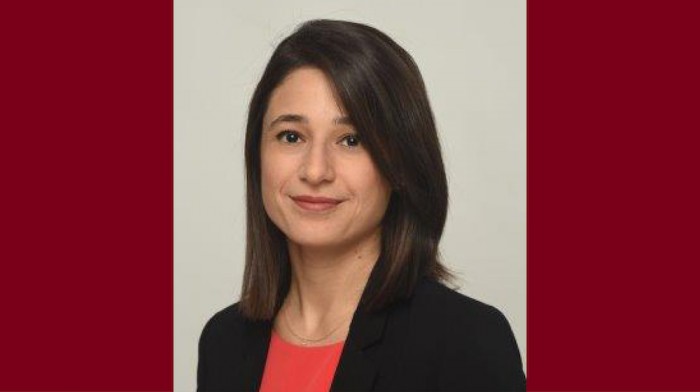
Glaucoma, a disease characterized by high intraocular pressure and damage to the optic nerve, is the leading cause of irreversible blindness in the U.S. and world. Naturally, when patients are diagnosed with glaucoma, they may be afraid of becoming blind from it.
“As a glaucoma specialist, I think one of the most important parts of my job is educating patients on their disease and taking away some of that fear,” said Huda Sheheitli, MD, an ophthalmologist at University of Minnesota Physicians (M Physicians). “I think it’s very important that patients know that today, we have a lot of technology and treatment options that can certainly help prevent the progression of this chronic disease.”
At M Physicians, early detection and highly specialized, integrative glaucoma care aims to improve outcomes for patients suffering from the condition. Dr. Sheheitli, part of the comprehensive glaucoma care team, completed a two-year Bascom Palmer Eye Institute Glaucoma Fellowship and focuses her practice on medical and surgical management of the various types of glaucoma. She also specializes in the surgical management of cataract, especially in patients with glaucoma. She cares for adult glaucoma patients at the M Health Fairview Philips Wangenstein Building Eye Clinic and the Clinics and Surgery Center - Minneapolis.
“Glaucoma has been called the silent thief of sight, because unfortunately by the time most patients are diagnosed, they are already suffering from irreversible vision damage,” Dr. Sheheitli explained.
Eyes produce their own fluid, which is drained out of filtration channels. If there’s any problem or blockage with this drainage system, the eye fluid can accumulate over time and increase the pressure inside of the eye, also called intraocular pressure. This increase in intraocular pressure damages the optic nerve, which is the cable that enables vision by connecting the eyes and brain. While high intraocular pressure is the primary risk factor for glaucoma, it is not the only factor that causes glaucoma to progress. Furthermore, not everyone who has high intraocular pressure will develop glaucoma, and conversely people may develop glaucoma despite having normal intraocular pressure. It all depends on the patient’s optic nerve, and the glaucoma damage often develops when the intraocular pressure is higher than what the individual’s optic nerve can tolerate.
“The most common type of glaucoma is primary open-angle glaucoma, which is characterized by the gradual loss of vision over time. Patients with this type of glaucoma often have no idea they are experiencing problems until they have already sustained serious damage in their eyes,” Dr. Sheheitli explained. “The less common, more time-sensitive form of glaucoma is the acute angle-closure glaucoma, which usually happens because of a sudden closure in the eye’s drainage system, creating a rapid buildup of intraocular pressure. It causes prominent symptoms including sudden blurred vision, severe eye pain, nausea, headache, vomiting and seeing halos and rainbow rings around lights.”
Glaucoma commonly impacts adults over the age of 40, however it may happen to patients of all ages. Certain medications and health conditions, such as diabetes, may increase the likelihood of developing the disease. Additionally, African Americans are at a heightened risk of developing glaucoma at a younger age and experiencing more progressive vision loss.
“I always tell my patients that early detection is key,” Dr. Sheheitli said. “If you’re someone who has certain risk factors, such as a family history of the disease, screening should begin around the age of 40.”
While there are increasing options to treat and manage glaucoma, the prognosis and treatment plan depends on how advanced the disease state is.
“When you first diagnose someone with glaucoma, you really have to know what stage the disease is in and tailor management based on that,” she explained. “Primary treatment options might include glaucoma drops or a light energy laser applied to the drainage system, which helps the drain work better and can lower the intraocular pressure.”
There are also emerging implants that can be placed in the front part of the eye, releasing medication from within the eye, so that patients don’t have to apply eye drops throughout the day. Finally, there’s surgical management in the form of minimally invasive glaucoma surgery, or more traditional filtration surgeries that are a bit more invasive.
“It’s very important to care for patients as if you’re caring for a member of your own family, and treat them as a person, not a disease,” Dr. Sheheitli said. “This is certainly one chronic disease that may require lifelong treatment.”
While glaucoma may require extended treatment, with proper care, it’s very manageable.
“It’s inspiring to see firsthand the tremendous effect an intervention can have on someone’s life by changing their vision,” Dr. Sheheitli said.
Contact our providers:
Huda Sheheitli, MD
Phillips-Wangensteen Building Eye Clinic
For Appointments: 612‑625‑4400
516 Delaware St. SE
Minneapolis, MN 55455
M Health Fairview Clinics and Surgery Center - Minneapolis
For appointments: 612‑625‑4400
909 Fulton St. SE
Suite 2-201, Minneapolis, MN 55455